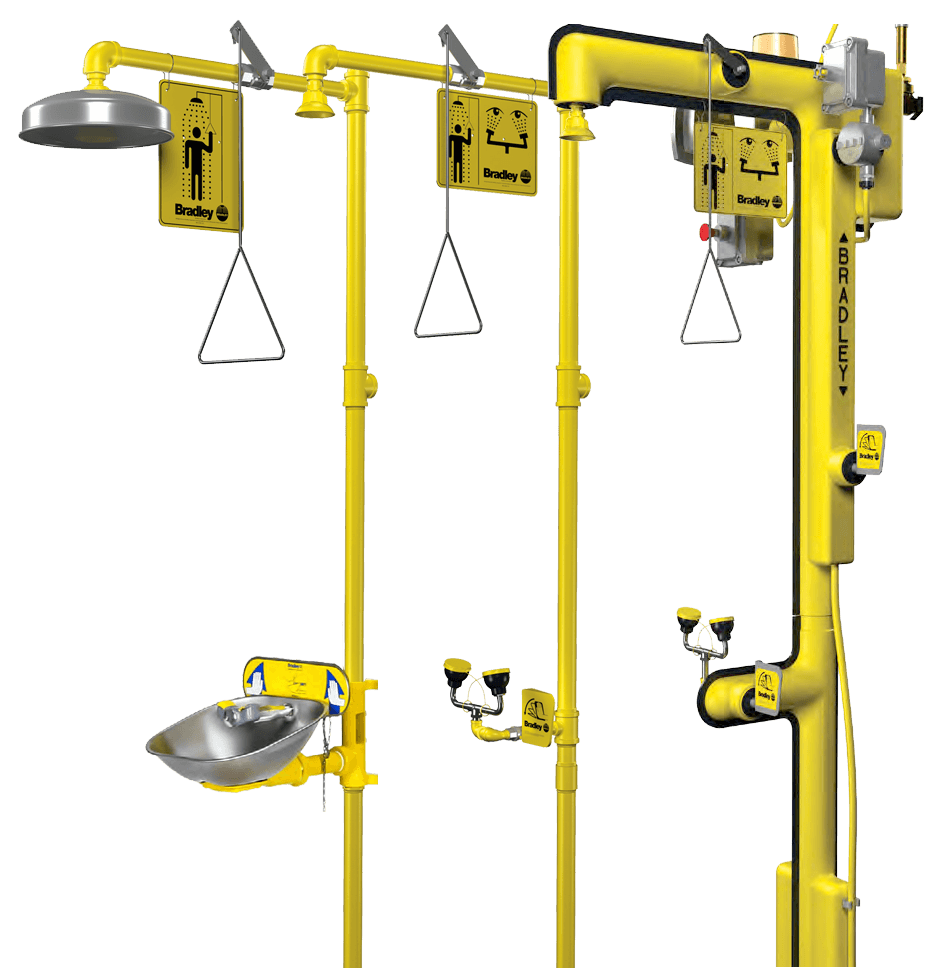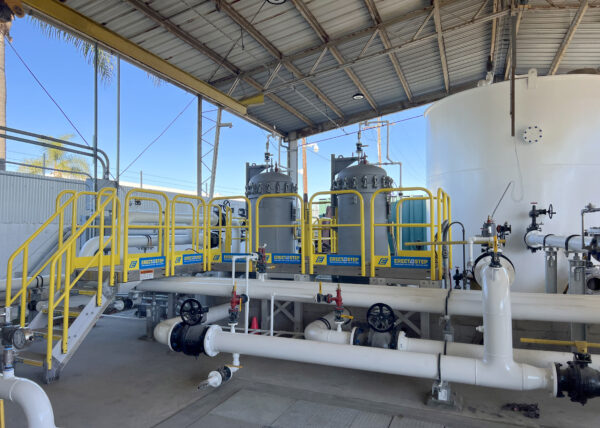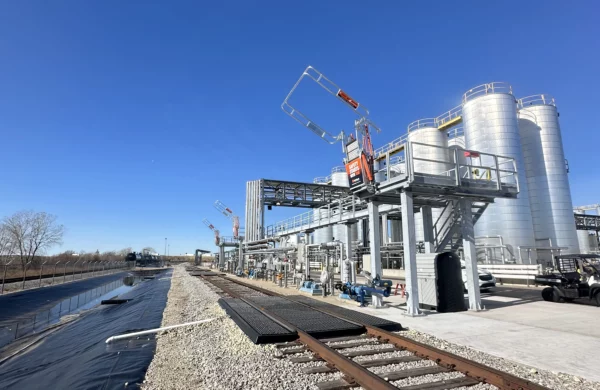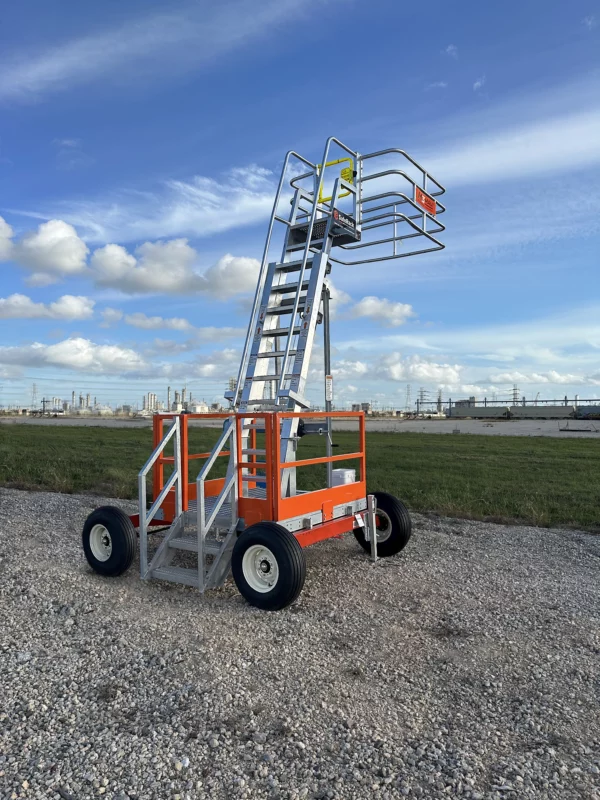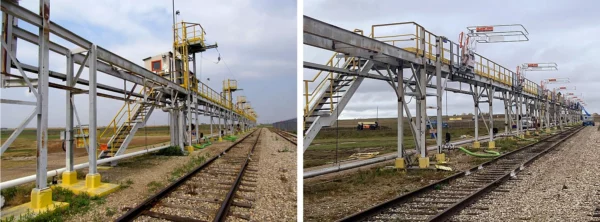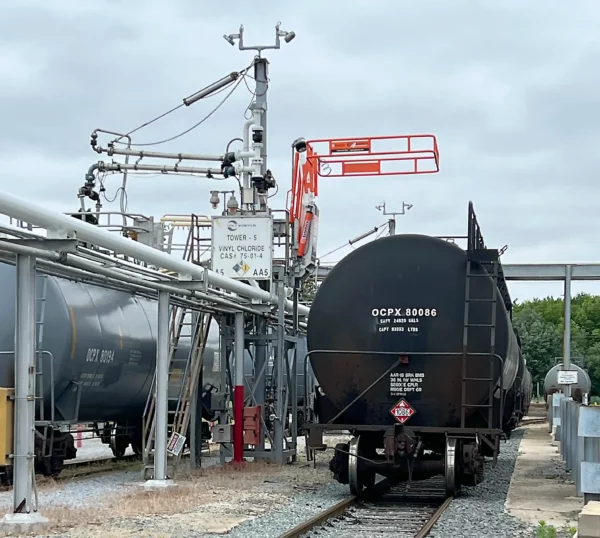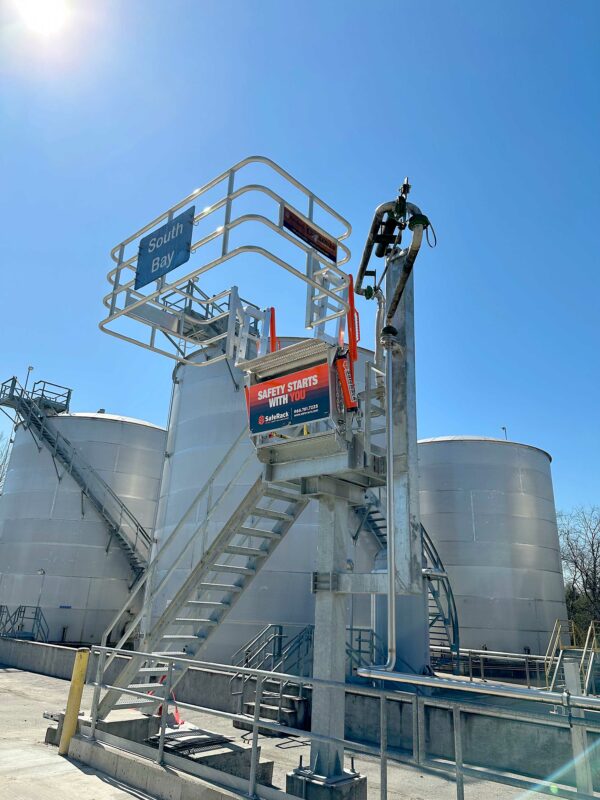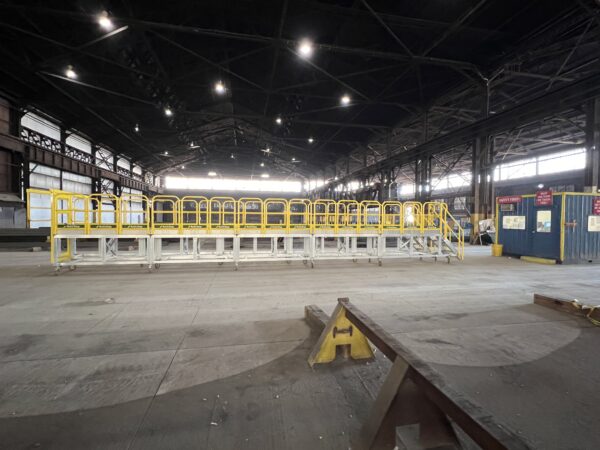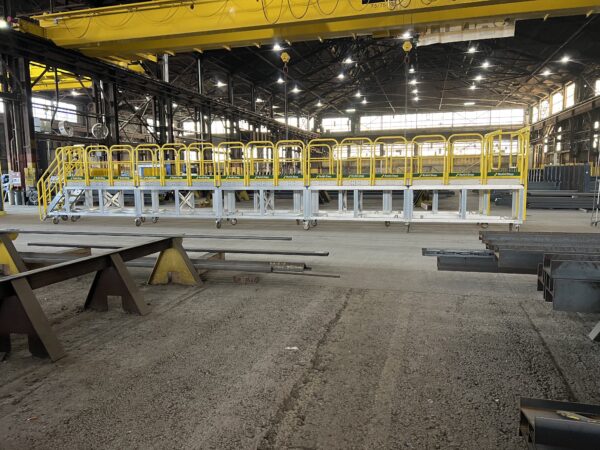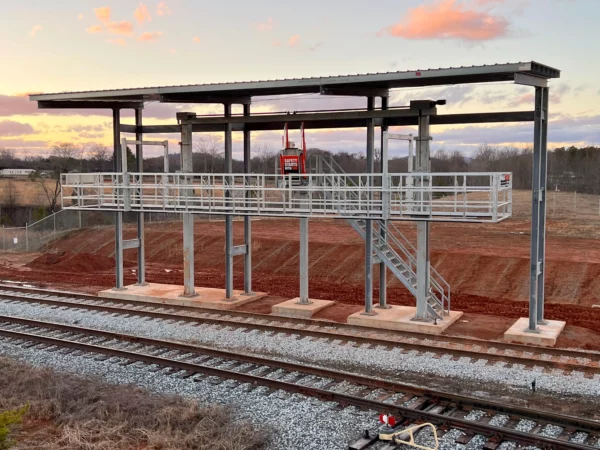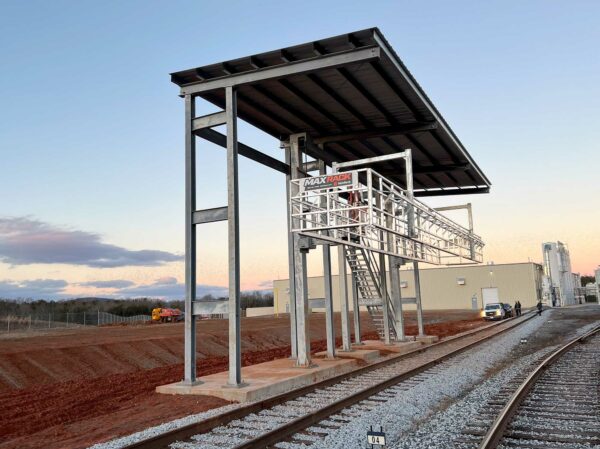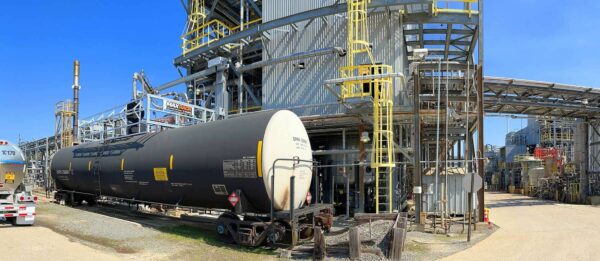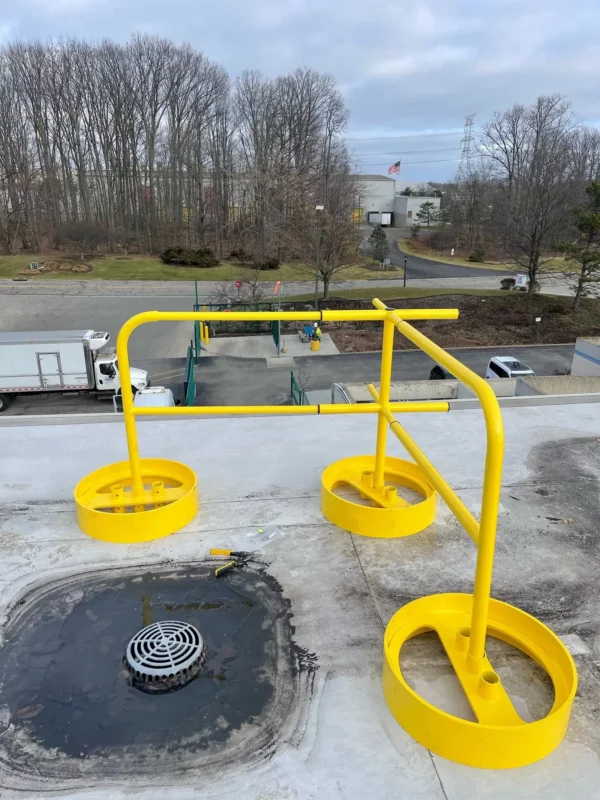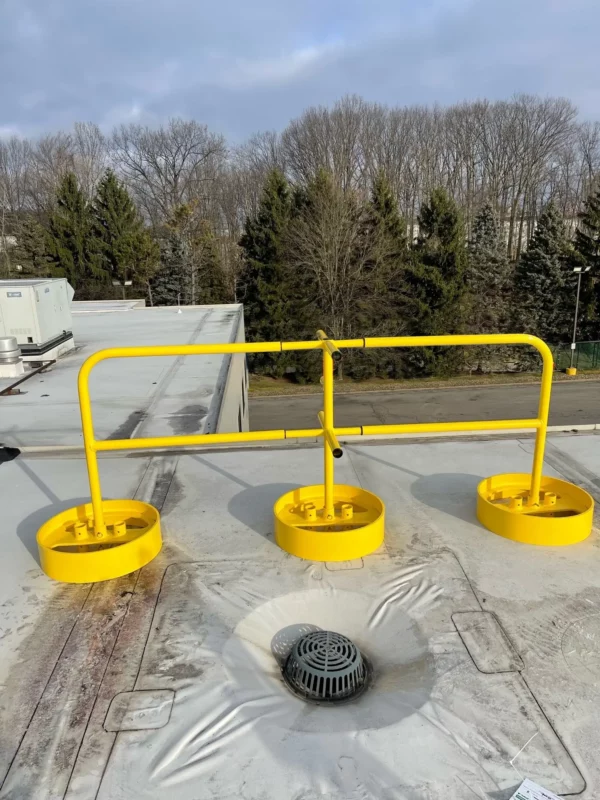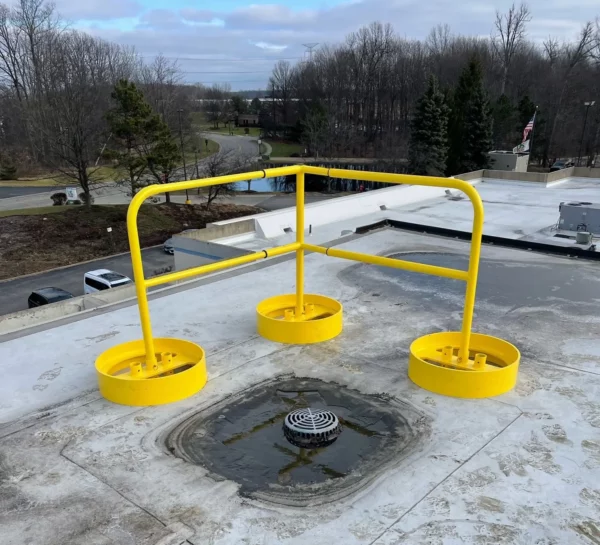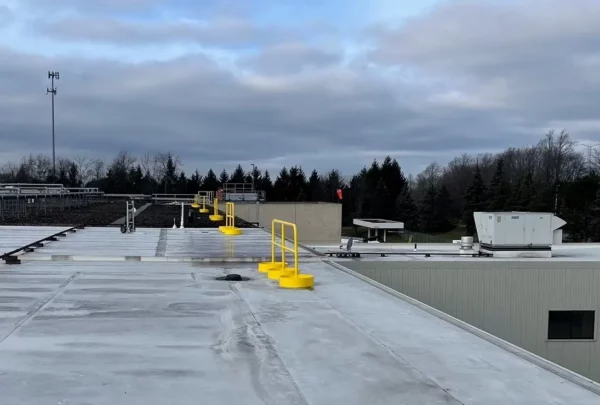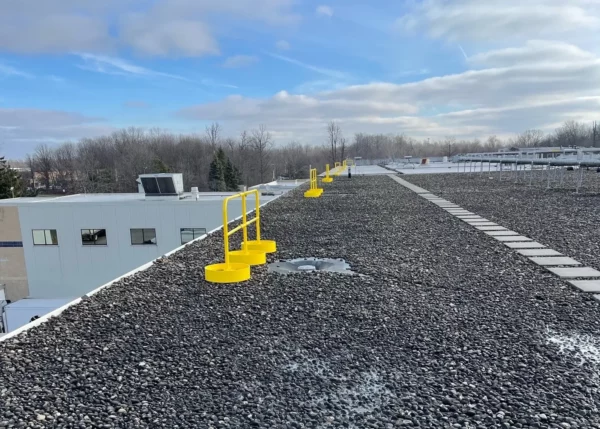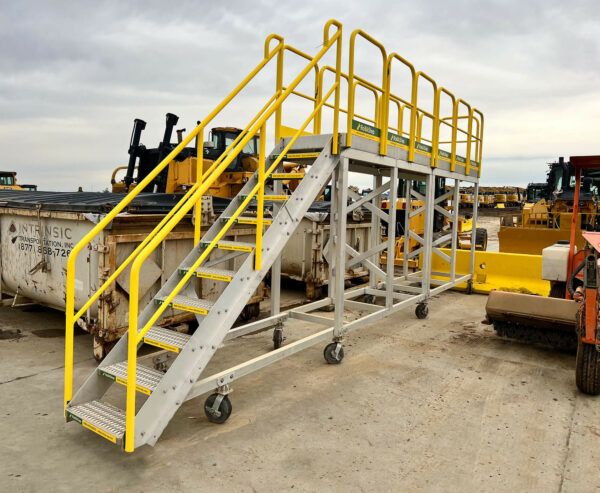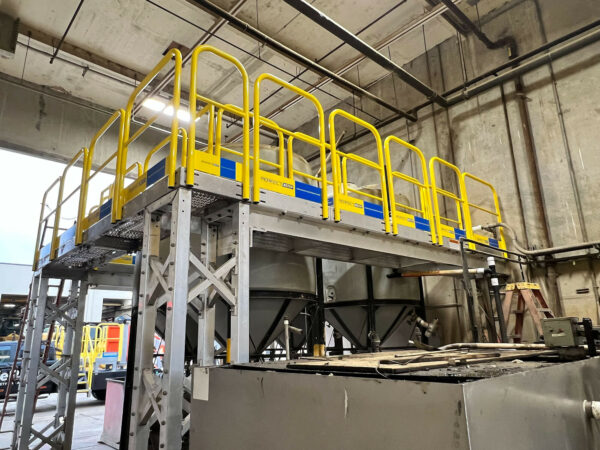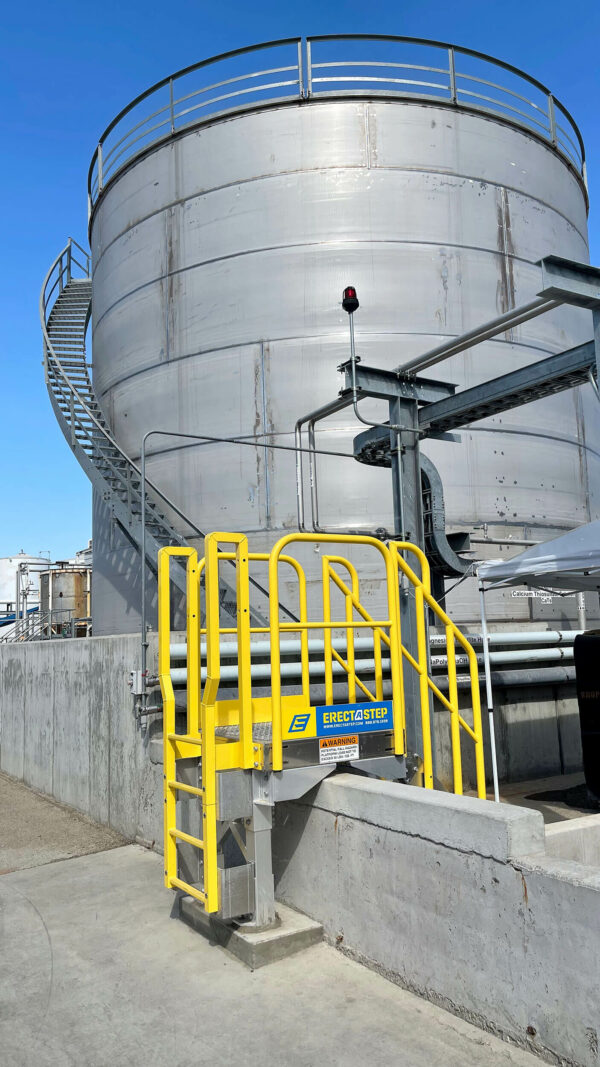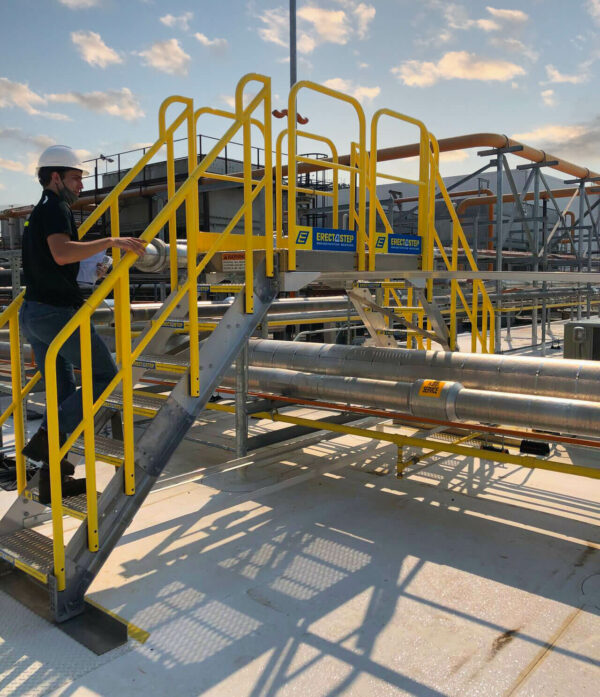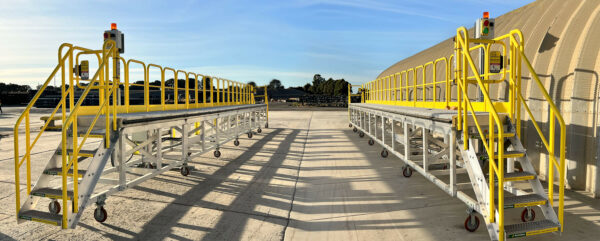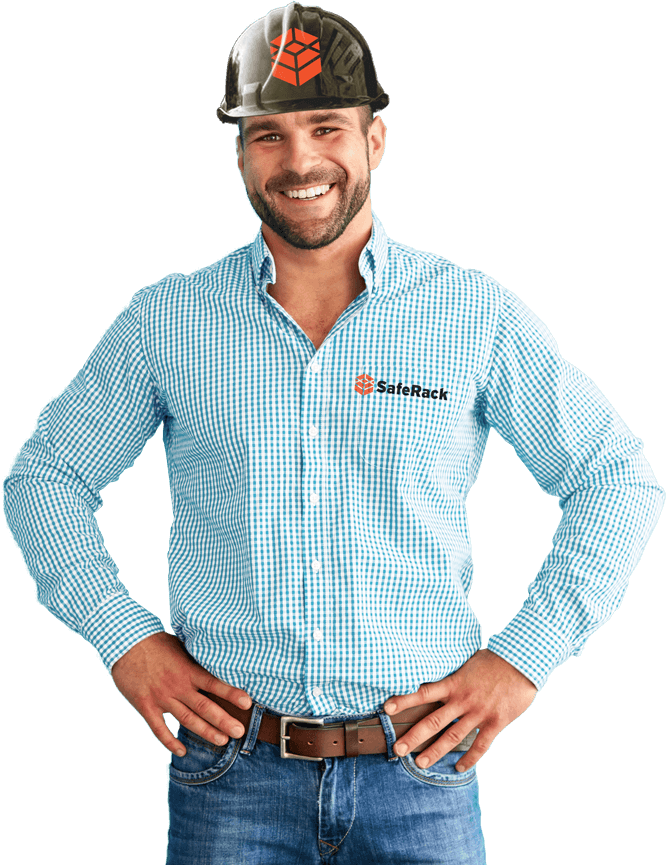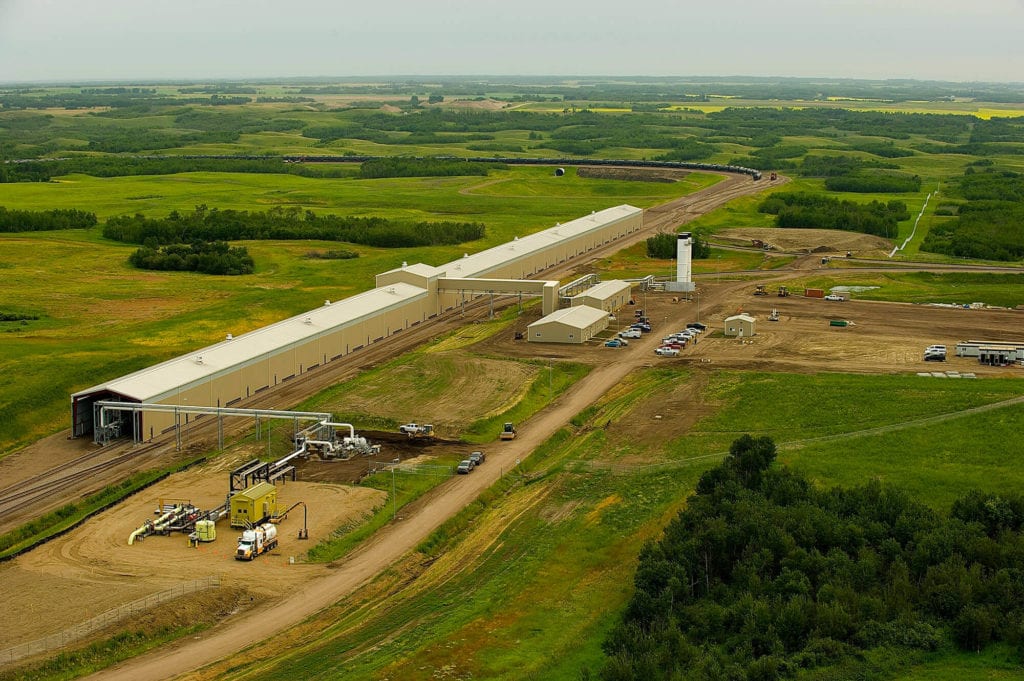Get a quote, configure a custom safety solution or ask a question. We're here to help!
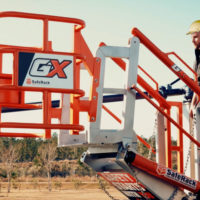
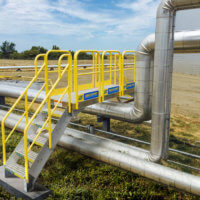
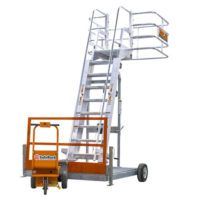
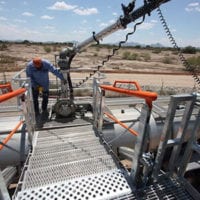
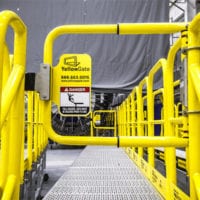
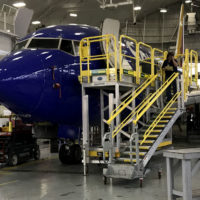
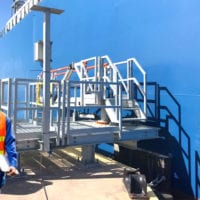

- Spill ContainmentMore …Loading Safety CagesMore …
SafeRack Worldwide
We pride ourselves on one-on-one customer service. When you call SafeRack, we'll be there to answer your questions with a combined experience of 400+ years.
Select your region below.- View Products
- Railcar & Truck Loading Platforms
- Gangways & Loading Ramps
- Stairs, Platforms & Ladders
- Mobile Ladders & Platforms
- Loading Arms & Fluid Transfer
- Safety Gates & Traffic Control
- Aviation & Aerospace Access
- Marine Access & Loading
- Grounding & Monitoring
- Spill Containment
- Loading Safety Cages
- Transloaders & Skids
- Shelters & Canopies
- Fall Protection
- Terminal & Speciality
Home / Industries / Bulk Chemical Loading / Polypropylene Handling Design, Loading, and Installation.Polypropylene (PP) Handling Design, Loading, and Installation.
What is Polypropylene? Polypropylene is a thermoplastic “additional polymer” made from the combination of propylene monomers. It is used in a variety of applications to include packaging for
consumer products, plastic parts for various industries including the automotive and medical industries.
In the United States, Polypropylene, in either powder, flake or pellet form, is typically shipped via hopper cars or dry bulk cargo tankers. A typical hopper car carries 185,000 pounds (84,000kg) of PP, and a hopper truck transports 45,000 pounds (20,000Kg) on average. Both hopper cars and dry bulk trailers are top-loaded via loading spouts or large diameter flexible hoses. Bottom unloading is achieved by introducing pneumatic air, and transferred via flexible metal hoses.

Question, Get a Quote, Live Demo or Request an On-Site Visit
Our experts simplify the complex
View Full TextYour Project
Typically, as a starting point, we will need to know answers to these questions for your project
- The Railcar connection locations need flexibility – Do you know what the breadbasket connections look like?
- Are you using liquid and vapor arms/hose as two separate devices or a piggyback arm?
- Is the loading station indoors or outdoors?
- Is the loading area temperature controlled?
- How are you going to spot your railcars
Our highly trained technical sales team will undertake a detailed site survey prior to undertaking any work to check and clarify all dimensions, obstructions, access issues and other salient points. Our challenge is to provide the safest working environment – protecting operators and the equipment – while simultaneously enabling you to improve throughput and productivity.
Your Project Needs
Whether you are looking for a turn-key installation, on-site supervision or a maintenance program, SafeRack is positioned to assist you. We can do as little or as much as you need. Our project management and supervision team is the best in the business at supporting your company’s needs.
- Collaborative Design – Our loading platform specialists will work with you one on one, if you design to design the best loading solution for your specific needs
- Contract review – drawings and associated documents relating to the contract prior to site arrival
- Risk Assessment – Undertaking a site risk assessment
- Shipment Inspection – Detection of any shipping damage or abnormalities
- Material Receiving – Supervised off-loading and transport at site
- Installation Management – Supervised Installations and Coordination
- Start-up & Commissioning – On-site training for both users and maintenance personnel
Loading Arms
Generally speaking, SafeRack recommends rigid pipe loading arms where possible for the following reasons:
- Balanced throughout their movement envelope
- Designed not to hit the ground – protecting the asset and the operator
- Ergonomic – one man operation
- Fitted with manual or actuated valves.
- Fitted with optional purge/vent facilities
- Can be moved into position with ease and left hanging in the air while the operator prepares the tanker connection
- Parked neatly
Hoses require:
- Annual pressure test
- Are difficult to stow neatly when not in use
- Can be dropped
- Can be driven over
- Are very heavy to use if fitted with a valve at the tanker connection point
- Cannot be easily heated or have vent/purge valves fitted to it
- Prone to catastrophic failure
Typical Polypropylene Loading Platform
Quote or discuss your installation.
Start by selecting loading application"*" indicates required fields
Below are some of the loading and unloading solutions for illustrative purposes only. Our experts will work with you and your team for a custom solution to suit your needs.
Polypropylene Loading

PP is typically loaded into hopper cars via flexible metal hoses or spouts. Hammer unions, quick-acting couplings, and breakaway safety couplings can all be incorporated into the design.
Most hopper car transfer systems incorporate a vacuum pump that will create a vacuum that pulls the resin out of the hopper car and into a silo or in-plant transfer system.
Hopper trucks use a built-in system of rotary vane compressor (or blower) that pushes resin out and into the in-plant transfer system. Optimum air velocity is 4,500 feet per minute (fpm)

Venting when unloading to prevent a vacuum. 
Polypropylene Truck Transfer – Flexible metal hose used to transfer product Polypropylene Gangways

A wider access gangway (36″-48″ is preferable) as it helps improve access and egress to and from the vessel. In addition, a wider gangway will reduce the risk of the operator’s PPE getting caught, torn or damaged, and will improve productivity and safety. Powered gangway solutions are also an option, with both hydraulic and pneumatic solutions being commonly used. Each gangway will be fitted with a two-rail safety cage for the railcar crash box. This will be a centered 6’x6’ safety cage to sit directly over the cashbox. This will provide a safe, secure work environment for your operator when connected to their breathing apparatus.

SafeRack’s GX SAS gangways use Retractalok power-assist technology allowing operators to raise or lower effortlessly, light as a feather to lift, and solid as a rock. Tested in the most critical applications, this revolutionary new gangway outperforms all others. Available in multiple lengths and widths.
Learn MoreMAXRack Elevating Safety Cage
 As an alternative to our two and four-rail safety cages, some customers prefer our MAXRack elevating safety cages. The ultimate fall prevention solution engineered to keep operators safe and productive. Designed for both trucks or railcars, and available in multiple cage lengths and widths. Safe, durable, and easy to use. MAXRack is built rock-solid with galvanized steel column supports and lifting arms (cages can be Aluminum, Galvanized, or Stainless Steel depending on application) Available in two power options – Pneumatic Air Drive and Electric Drive (Explosion and Non-Explosion Proof).
As an alternative to our two and four-rail safety cages, some customers prefer our MAXRack elevating safety cages. The ultimate fall prevention solution engineered to keep operators safe and productive. Designed for both trucks or railcars, and available in multiple cage lengths and widths. Safe, durable, and easy to use. MAXRack is built rock-solid with galvanized steel column supports and lifting arms (cages can be Aluminum, Galvanized, or Stainless Steel depending on application) Available in two power options – Pneumatic Air Drive and Electric Drive (Explosion and Non-Explosion Proof).
Learn MorePolypropylene Eye Wash/Drench Showers

ANSI guidelines state that an Eye Wash/Drench Showers need to be located 10 seconds or 55’ (16.8m) from contaminants or hazardous materials. Eyewash stations need to be on the same horizontal plane with no obstructions.
Therefore, we would propose the installation of a standard combination Drench Shower/Eyewash Unit, which will save limited space and fit easily into any work
Polypropylene Spill Containment

Spill containment pans will be provided at the point of loading operations and is an essential piece of equipment in overall site safety and environmental protection Polypropylene Grounding

Polypropylene is highly flammable, and industry best practice includes the grounding of all vessels before starting the (un)loading process. - Vehicle grounding and bonding — ensure true grounding before product flow is permitted
- Explosion-proof enclosures — meet or exceed UL, CSA and Ex requirements
Polypropylene Safety Gates

Safety Gates will be installed at the top of stairs and any other openings to ensure operator safety at all times.  YellowGate Safety Gates
YellowGate Safety GatesSafeRack’s line of industrial safety gates is the most flexible product on the market with the ability span openings between 16” and 36” and is field adjustable with nothing more than a wrench. Learn More
Polypropylene Options

- Lighting – Lighting both over and under the platform will be provided. For overcast days or second shift, lighting is essential for improved safety and improved productivity.
- Platform & Canopies – Full platform canopies reduce exposure to the elements and improve the safe and productive loading operation from the operator’s perspective.
- Operator Shelter – Depending on your site requirements, consideration should be given to the requirement of an operator or guard building on the loading platform. This can be customized to meet specific site requirements
- Wheel Chocks – Railcar Wheel Chocks provide fast blocking of all types of railcars and meet OSHA regulations to safely prevent railroad cars from moving during loading or unloading operations. This is a requirement by the Department of Homeland Security
Personal Protective Equipment PPE Requirements
Eye/Face Protection: Wear chemical safety goggles. A face shield (with safety goggles) may also be necessary.
Skin Protection: Wear chemical protective clothing e.g. gloves, aprons, boots. Coveralls or long sleeve shirts and pants in some operations. Wear a chemical protective, full-body encapsulating suit, and self-contained breathing apparatus (SCBA). Suitable materials include: butyl rubber, neoprene rubber, Viton®, Viton®/butyl rubber, Barrier® – PE/PA/PE, Silver Shield® – PE/EVAL/PE, Trellchem® HPS, Trellchem® VPS, Saranex®™, Tychem® BR/LV, Tychem® Responder® CSM, Tychem® TK. The following materials should NOT be used: natural rubber, polyvinyl chloride. Recommendations are NOT valid for very thin neoprene rubber gloves (0.3 mm or less).
Respiratory Protection: Up to 5 ppm:
(APF = 10) Any chemical cartridge respirator with cartridge(s) providing protection against Polypropylene*; or Any supplied-air respirator*.
*Reported to cause eye irritation or damage; may require eye protection.
APF = Assigned Protection Factor
Recommendations apply only to National Institute for Occupational Safety and Health (NIOSH) approved respirators. Refer to the NIOSH pocket guide to chemical hazards for more information.
Use a local exhaust ventilation and enclosure, if necessary, to control the amount in the air. Consider using a corrosion-resistant exhaust ventilation system separate from other ventilation systems. It may be necessary to use stringent control measures such as process enclosure to prevent product release into the workplace. Use backup controls (e.g. double mechanical pump seals) to prevent the release of this material due to equipment failure. * For illustrative purposes only. Our experts will work with you and your team for a custom solution to suit your needs Polypropylene 101
Things to know about Polypropylene
Polypropylene (PP) – Product Overview:
PP is not considered hazardous and has a DOT identification number of UN 1077.
Approximately 90% of the plastic resins produced in North America leave the producing plants in covered hopper cars. Many of these railroad cars travel directly to customers who remove the plastic resins from the hopper cars and process the resins into final products.
The remainder of the hopper cars go to transfer stations where material is removed from the hopper cars to bulk trucks or to packaging lines where the resin is placed in bags or bulk cartons.
Discovered in the mid-1950’s polypropylene unique chemical makeup makes it very versatile.
- It has a high melting point making it ideal for microwave containers.
- It doesn’t react with water, detergents, acids, or bases, so it doesn’t break down easy
- It’s resistant to cracking and stress, even when flexed so it’s ideal for hinges.
- Tensile strength of approximately 4,800 psi.
Polypropylene is also recyclable. Like other thermoplastics, polypropylene can be melted and reformed into plastic pellets that are then used to make new products.
Polypropylene is easily flammable, and at temperatures above 100 degrees C PP dissolves in aromatic hydrocarbons, such as benzene and toluene. As a slow-burning plastic, PP emits a dense black smoke when ignited. First responders should wear self-contained breathing equipment and protective clothing.
Melting point: 266 to 340F or 130 to 171 C.
Polypropylene (PP) – Product Overview:
Discovered in the mid-1950s, polypropylene is a thermoplastic made from the combination of propylene monomers. It is used in a variety of applications, including packaging for consumer products and plastic parts for the automotive and medical industries.
The unique chemical makeup of polypropylene makes it very versatile. It has a high melting point making it ideal for microwave containers. Since it doesn’t react with water, detergents, acids, or bases, it doesn’t break down easily. Polypropylene is suitable for hinges because it is resistant to cracking and stress, even when flexed and has a tensile strength of approximately 4,800 psi.
Like other thermoplastics, polypropylene can be recycled by melting and reforming into plastic pellets and then used to make new products. Polypropylene has a melting point of 266F to 340F (130C to 171C).
Polypropylene, along with other plastic resins in powder, flake, or pellet form, is typically shipped via dry bulk trucks or hopper rail cars. Approximately 90% of plastic resins in North America leave the producing plants in covered hopper cars. A vast majority of these railroad cars travel directly to customer facilities where the plastic resins are removed from the hopper cars and processed into final products. The remainder goes to transfer stations where it is removed from the railcars and loaded into bulk trucks or packaging lines and placed in bags or bulk cartons.
Pneumatic transfer systems move products through the creation of either positive or negative atmospheric conditions and are vital to the plastic resin industry. Negative atmospheric pressure systems, or vacuum systems, create a negative pressure differential causing the flow of plastic resins from the high-pressure to the low-pressure areas. In positive atmospheric pressure systems, plastic resins are moved from one point to another by applying a higher pressure at the starting point of the transfer. The resins then flow to the desired endpoint. A Pull/Push (or Push/Pull) system combines both vacuum and pressure sections.

Customer Reviews
 5 5Amber was very good about quick response time.
5 5Amber was very good about quick response time.Amber was very responsive as soon as she had the proper information to provide a quote for the loading arm bearings and seals that were needed.
By Phil Fenton from Vertellus Specialities on 6/29/185 5The flat ramp gangway is great and we appreciate the follow-up from our rep.The loading rack has already been installed….great product ! I enjoyed working with Travis & Heather, specifically their follow-up. I would consider them very responsive and the product was delivered as advertised.
By Steven Gerbasi from Cleveland Industrial Group on 12/3/10 4 5SafeRack exceeded the delivery we requested.
4 5SafeRack exceeded the delivery we requested.Heather Schaller, my inside salesperson, was very helpful in getting proposals to me, and getting the order placed. We have a number of your gangways with safety cages, and our operators find them very user friendly. Construction is very good and the units look good in the plant. SafeRack exceeded the delivery we requested, allowing us to receive the product early. Thank you SafeRack and the SafeRack Team.
By James Stec from Rohm & Haas Chemicals LLC on 11/1/13 5 5It is sturdy, functional, OSHA-compliant, it stands up to the weather and heavy use.
5 5It is sturdy, functional, OSHA-compliant, it stands up to the weather and heavy use.No concerns. Staff is professional and friendly. I would recommend the product. It is sturdy, functional, OSHA-compliant, it stands up to the weather and it stands up to heavy use. The salesman has been responsive. He promptly took my order and delivered a thorough proposal. My order was delivered within a few weeks, well within the expected shipping time.
By Joe Stansell from Proximo Distillers, LLC on 8/18/16 4 5The results have been excellent every time.
4 5The results have been excellent every time.Everything was positive. The item is high quality, the price is lower than other products on the market, and the sales team delivered on the promise of a quick delivery, for our application it’s perfect. Safety is a big concern, we unload a flammable product, and this product keeps our team members safe. We have done business with your company before and the results have been excellent every time.
By Dustin Conner from ADM on 1/23/14 4 5Easy transaction, quick delivery, easy to install.
4 5Easy transaction, quick delivery, easy to install.Easy transaction, quick delivery, easy to install.
By Daryl Brye from Gundersen Health System on 12/3/15
Is your plant or facility compliant with ANSI, OSHA, and local safety codes? We can help!


EMERGENCY EYEWASHES / SHOWER EQUIPMENT AND THE ANSI/ISEA Z358.1 – 2014 STANDARD
Following eye contact, you must start washing with water immediately to prevent permanent damage. In the event of skin contact, you must start washing with water immediately to prevent slow-healing chemical burns.
Are you aware that ANSI guidelines state that Eye Wash/Drench Showers need to be located 10 seconds or 55′ from contaminates or hazardous materials and located on the same horizontal plane, with no obstructions? If bottom loading/unloading, an additional shower should be located at grade as well. SafeRack provides the above equipment plus much more needed to keep employees safe and expedite bulk chemical loading and unloading.
OSHA Regulation Experts – Does your existing chemical safety equipment or chemical loading systems meet OSHA’s latest requirements? SafeRack’s professional technical sales consultants are available to meet with your team to make recommendations to keep your facility in front of OSHA’s ever-changing country and region-specific standards and regulations, including lifeline and trolley beam fall arrest systems, metal stairs, and access platforms.
Why SafeRack?
The SafeRack approach is a collaborative one. Let’s call it The SafeRack Way. We have, over many years amassed a great deal of experience and understanding of the safety aspects involved in loading road tankers and railcars, as well as the behavioral habits of the operators.

Experts In Chemical Loading
- Acetic Acid
- Acetic Anhydride
- Acetonitrile
- Acrolein
- Acrylic Acid
- Acrylonitrile
- Aluminum Chloride
- Aluminum Sulfate
- Ammonia
- Ammonium Hydroxide
- Ammonium Nitrate
- Aniline
- Benzene
- Benzyl Chloride
- Bromotrifluoromethane
- Butadiene
- Carbon Dioxide
- Caustic
- Chlorine
- Chloroform
- Chlorosulfonic Acid
- DEF (Diesel Exhaust Fluid)
- Diethylene Glycol
- Dimethylformamide
- Dodecylbenzene Sulfonic Acid
- Ethanol
- Ethyl Acetate
- Ethyl Chloride
- Ethylene
- Ethylene Dichloride
- Ethylene Glycol
- Ethylene Oxide
- Ferric Chloride
- Ferrous Chloride
- Hexane
- Hydrochloric Acid
- Hydrofluoric Acid
- Hydrofluorosilicic Acid
- Hydrogen Cyanide
- Hydrogen Peroxide
- Hydrofluoric Acid
- Hypochlorous Acid
- Isopropyl Acetate
- Liquid Argon
- Liquid Nitrogen
- Liquid Oxygen
- Maleic Anhydride
- MDI
- Methanol
- Methyl Chloride
- Methyl Ethyl Ketone
- Methyl Methacrylate
- Methyl Isocyanate
- Molten Sulphur
- Nitric Acid
- Oleum
- Phenol
- Phosphoric Acid
- Phosphorus Oxychloride
- Phosphorus Trichloride
- Polypropylene
- Renewable Diesel
- Sodium Cyanide
- Sodium Hydroxide
- Sodium Hypochlorite
- Styrene Monomer
- Sulfuric Acid
- Sulfur Dioxide
- Titanium Tetrachloride
- Toluene
- Toluene Diisocyanate
- Turpenitne
- UAN (Urea Ammonium Nitrate)
- UREA
- Vinyl Acetate
- Vinyl Chloride
- Xylene
- Zinc Chloride
- Agro-Chemical
- Specialty Chemical
- Petrochemical

North America’s largest loading terminal
World-leading designer, manufacturer, and installer of truck and railcar loading platforms
As one of the primary railcar loading points, Hardisty is one of the major crude oil hubs in North America and a major origination point of pipelines that export to the United States. SCS was asked to supply and construct a SafeRack crude oil loadout terminal spanning nearly half a mile. The USD Hardisty terminal can load up to two 120-railcar unit trains per day and consists of a fixed loading rack with 62 railcar loading positions enclosed, separate control, operator, and mechanical buildings, as well as a unit train staging area and loop tracks capable of holding multiple unit trains simultaneously. SCS also supplied and installed boom-supported loading arms with supply and vapor management systems.

Quick Quote 866-761-7225
LET US DESIGN YOUR SOLUTION TODAY
Our innovative tools provide 3D visualizations and accurate quotes in minutes.
Get Help NowOrder Now 866-761-7225
Questions or Need a Quote?
Chat live with a knowledgeable and friendly safety expert now.

Bob Kashtan
Located in South Carolina

Joey Robinson
Located in South Carolina

Caelin Lacy
Located in South Carolina

Katie Kelly
Located in South Carolina

Amber Graham
Located in South Carolina



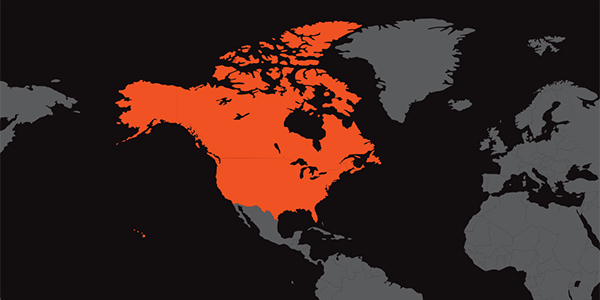

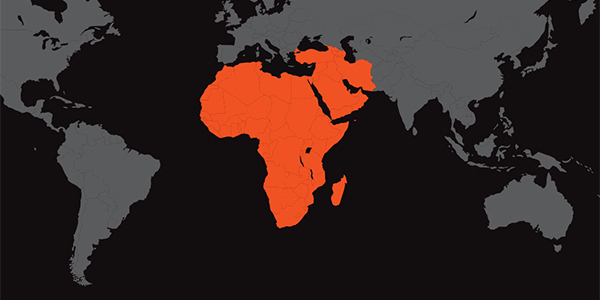

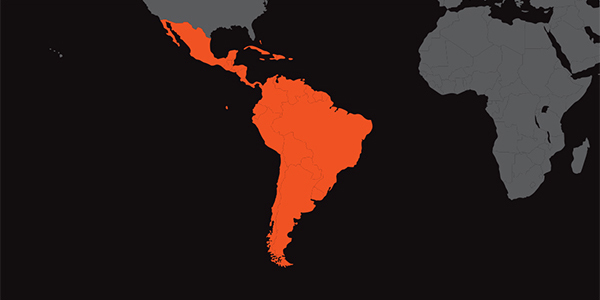






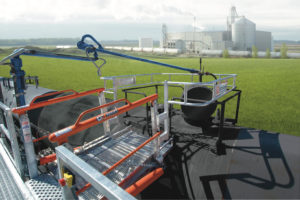


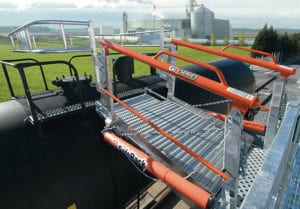
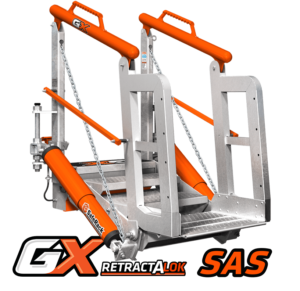
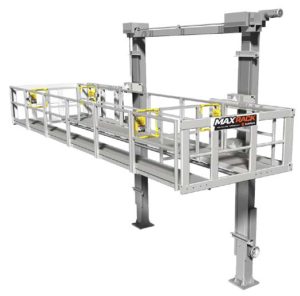 As an alternative to our two and four-rail safety cages, some customers prefer our MAXRack elevating safety cages. The ultimate fall prevention solution engineered to keep operators safe and productive. Designed for both trucks or railcars, and available in multiple cage lengths and widths. Safe, durable, and easy to use. MAXRack is built rock-solid with galvanized steel column supports and lifting arms (cages can be Aluminum, Galvanized, or Stainless Steel depending on application) Available in two power options – Pneumatic Air Drive and Electric Drive (Explosion and Non-Explosion Proof).
As an alternative to our two and four-rail safety cages, some customers prefer our MAXRack elevating safety cages. The ultimate fall prevention solution engineered to keep operators safe and productive. Designed for both trucks or railcars, and available in multiple cage lengths and widths. Safe, durable, and easy to use. MAXRack is built rock-solid with galvanized steel column supports and lifting arms (cages can be Aluminum, Galvanized, or Stainless Steel depending on application) Available in two power options – Pneumatic Air Drive and Electric Drive (Explosion and Non-Explosion Proof).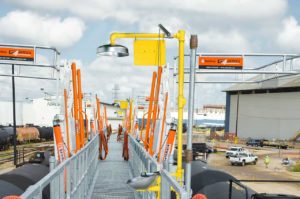

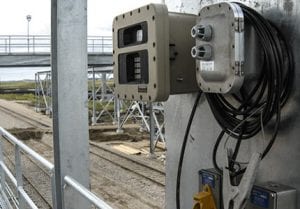
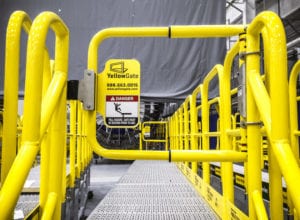
 YellowGate Safety Gates
YellowGate Safety Gates







